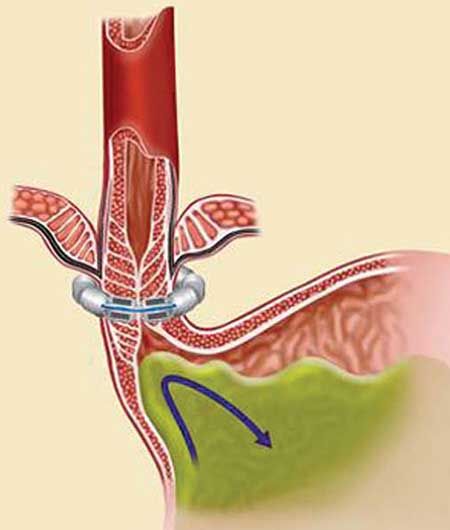Esophageal Band Implant Reduces GERD Symptoms
A minimally-invasive, surgically-implanted esophagus band developed at Stony Brook University Hospital effectively reduces symptoms of gastroesophageal reflux disease (GERD).

A minimally-invasive, surgically-implanted esophagus band developed at Stony Brook University Hospital effectively reduces symptoms of gastroesophageal reflux disease (GERD).
In patients who suffer from GERD, surgeons at Stony Brook University Hospital are implanting flexible magnetic bands around the esophagus just above the stomach, which allows food and liquid to pass through normally, but immediately closes after swallowing.
The magnetic attraction between the bands is designed to strengthen the weakened esophageal sphincter’s barrier function. When this function is weakened, GERD patients can experience heartburn, regurgitation, sore throat, cough, and chest pain. Following the procedure, patients can resume a normal diet and activities in less than a week.
“This new procedure represents a substantial advancement in our ability to treat patients who suffer from GERD,” Mark Talamini, MD, Chair of the Department of Surgery at Stony Brook University School Medicine, said in a press release. “In addition to excellent clinical results, this procedure provides many lifestyle benefits compared to the traditional surgery for reflux called Nissen fundoplication. Studies show that implanting the magnetic beads often reduces or eliminates the need for medications and offers improved quality of life for our patients."
After 10 years of development, the LINX device used in the surgery was approved by the US Food and Drug Administration (FDA) in March 2012. It underwent 2 clinical trials with 144 patients; in one trial, 90% of the patients achieved a reduction in time exposed to acid, while 93% reported a ≥50% reduction in GERD over 2 years. After 2 years, 92% of patients were off daily proton-pump inhibitors (PPIs), while only 1 patient out of 57 reported regurgitation.